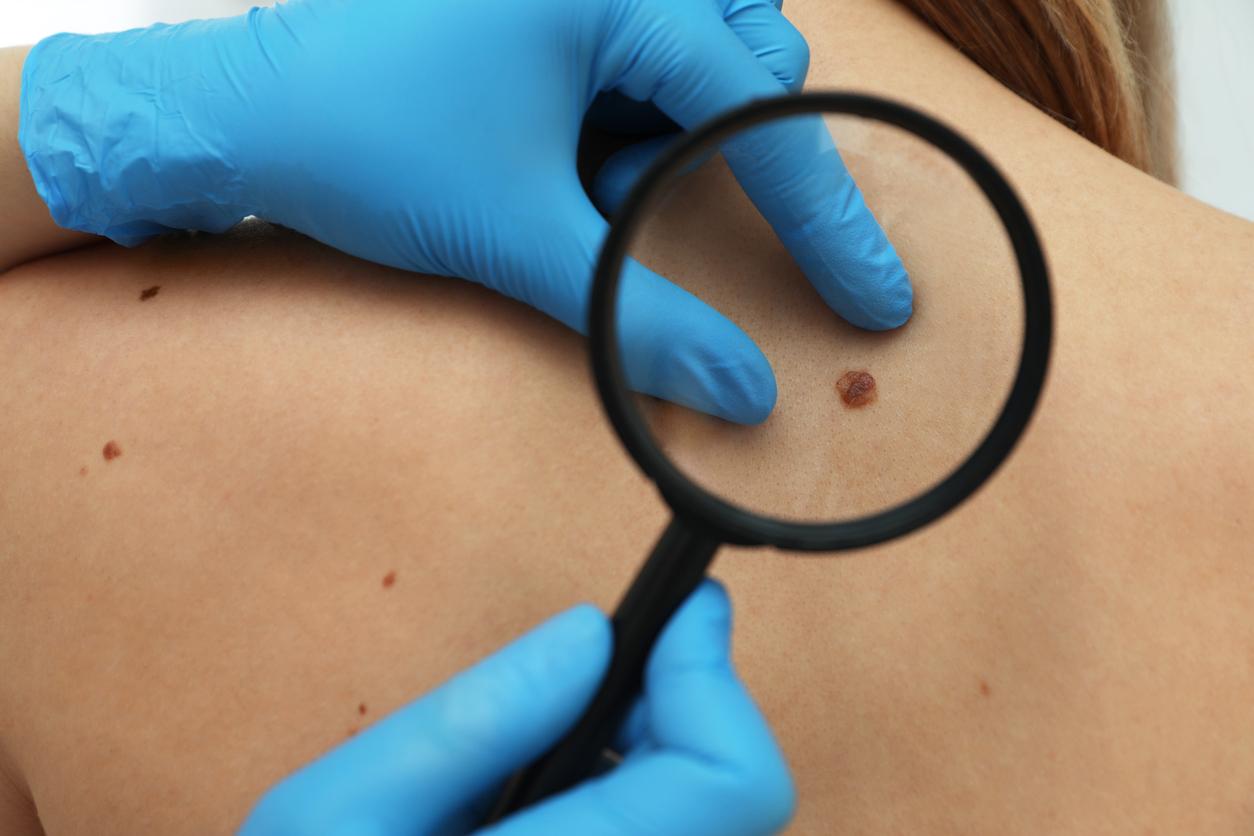The melanoma death rate is expected to drop by 2050. Innovative treatments could accelerate this movement if as many people as possible have access to it.

Each year, melanoma kills 1,500 people in France. For five decades, the number of diagnoses has increased by 10% per year. All over the world, the trend is on the rise. A clearer horizon is emerging, according to a team from the International Prevention Research Institute (IPRI). By 2050, the death rate from malignant melanoma will have declined. This is the result of the modeling presented at the European Congress on Cancer (ECC) which is being held in Amsterdam (the Netherlands) from January 27 to 30.
Calculations carried out by oncology experts provide a first assessment: the population most at risk of melanoma was born between 1900 and 1960. At that time, the risks of excessive UV exposure were not known and health professionals. health advised some patients to sunbathe. A period of joyous ignorance that ended in the 1960s.
Recently reached peaks
“The current death toll is the result of several factors,” confirms Professor Alexander Eggermont, Managing Director of Gustave-Roussy (Villejuif, Val-de-Marne) interviewed by Why actor. Among them, the holidays intended for sunbathing which are particularly harmful for the Scandinavians, the Scots or the Irish. When you live in Nice, you eat lunch in the shade, not on the beach. Another factor that explains the progression of melanoma is the aging of the population.
The estimate provided by IARC is based on data from three countries with different exposures: the United States, Sweden and Australia. Each peaks at a different time. Sweden is the country where awareness is the latest. It was not until 2010 that mortality peaked. In Australia, men peaked in 2015, women in 1990. The decline should therefore begin soon.
“Our results clearly show that melanoma mortality was caused by exposure to highly carcinogenic UV rays with the support of the medical community between 1900 and 1960,” says Alice Koechlin, who presents this work. For many years, it was recommended to expose children to the sun, especially in northern countries, in particular to counteract the lack of vitamin D and reduce the risk of rickets.

The question of cost
Prevention has also paid off, given the modeling. It projects two scenarios. At the heart of the researchers’ hypothesis, the impact of innovative treatments on survival. In the first projection, access to these new therapies is not universal. The result: in 2050, the death rate is falling. In Australia, it is halved. In the United States, it is two and a half to three times lower. The effect is less marked in Sweden, where the rate drops to a threshold one and a half times lower than at the peak.
But without equitable access to innovative treatments, the number of deaths will continue to rise. In question, the aging of the population. Indeed, melanomas should appear after 70 years from that date. The credit goes to prevention. Reducing the death toll will take extra effort. “If these treatments are available, mortality from melanoma will drop more quickly and the curves will straighten out from 2020-2025”, projects Professor Eggermont. A decrease which could be of the order of 25%.
Alexander Eggermont, Managing Director of Gustave Roussy: “ We now have treatments that can cure 30%, 40%, 50% of melanomas, even metastasized …“
There remains the question of the cost of these drugs, which amounts to thousands of euros. Because at present, universal care simply cannot be supported by the community.
.

















